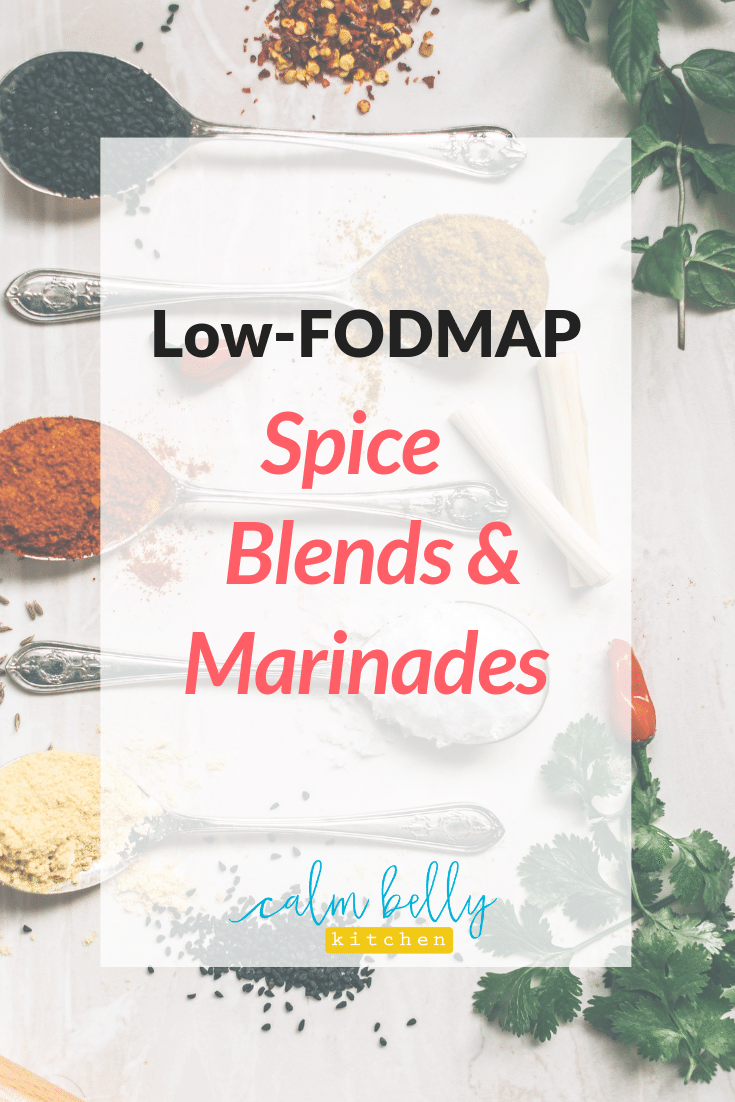Save it on Pinterest!
For those of you who struggle with understanding just what the heck is happening in their digestive tract, it can be challenging sometimes to pin down a diagnosis.
If you’ve been trying out the FODMAP diet and haven’t seen a ton of results or improvements on your symptoms, there might be something else going on. That something else might just be SIBO.
What is SIBO?
SIBO stands for Small Intestinal Bacterial Overgrowth. It is characterized as “the presence of excessive bacteria in the small intestine,” which can present with a number of tricky and frustrating symptoms, ranging from mild to really intense.
SIBO symptoms can be similar to IBS symptoms, and like IBS, SIBO can show up differently in different people.
SIBO Symptoms include:
Diarrhea
Unintentional weight loss
Constipation
Gas, bloating, and burps
Abdominal tenderness
When SIBO gets really bad, it can lead to nutrient malabsorption and nutritional deficiencies. This is because the bacterial overgrowth is damaging the delicate cells of the intestinal wall, messing up the whole digestive process.
With SIBO, it’s really a case of too much of a good thing. All that otherwise healthy, normal gut flora has gone way overboard, and your body is feeling the effects.
While research is still being done on SIBO to help narrow down exactly what’s happening, the bacterial overgrowth is thought to affect the way food is digested and vitamins are absorbed.
What Causes SIBO?
There are some risk factors that are thought to increase the likelihood of SIBO. These include (but certainly aren’t limited to):
IBS
Post-infectious IBS
Low stomach acid
Multiple courses of antibiotics
Celiac disease
Crohn’s disease
Diabetes
Organ system dysfunction, such as liver cirrhosis, chronic pancreatitis, or renal failure
Immunodeficiency syndromes
You can dig in deeper with studies such as this one if you want to see more information about the various other risk factors linked to SIBO.
Like other GI disorders (including IBS!), so much of SIBO is still a bit of a mystery.
Some studies have shown that things like low stomach acid, a decrease in pancreatic enzymes, or a decrease in bile acids (bile acids normally emulsify in the intestine, and don’t allow bacteria to grow) can contribute to this overgrowth. Even things like stress can decrease the motility of the intestine, allowing for bacteria to build up in the intestine.
Most recently the 2014 SIBO symposium, sponsored by the National College of Natural Medicine in Portland, Oregon, illuminated several causes and risk factors for SIBO. You can read an excellent write-up of their findings here.
But, long story short?
We know enough about SIBO to know that there’s still so much more to learn. Specifically in the realm of what you probably want to know, if you think you’ve got it.
How can we tell if SIBO is what’s causing you all your pain and discomfort, and how the heck can we make it go away?
How is SIBO diagnosed?
First things first, diagnosis. Right now, the best, but not perfect, method of SIBO diagnosis is via a lactulose breath test, which measures the amount of methane and hydrogen in the breath.
Although this test is not agreed-upon by the broader medical community, it’s not invasive, and can work for some, but unfortunately not all people.
False negatives are possible with a SIBO breath test. And moreover, as SIBO is still so poorly understood, there can be the added challenge of simply finding a physician who is knowledgeable about diagnosis and treatment.
For many folks, it’s equally useful to check things like vitamin levels (B12 tends to be low with SIBO), compare symptom lists, and try to figure out whether your symptoms are from SIBO, or from IBS.
Speaking of which...
How Can I Tell SIBO From IBS?
This is a great question, and one that is very reasonable to ask, given how similar they can appear. The best advice I would give is that the vast majority of IBS and Post-Infectious IBS symptoms will significantly improve after strictly adhering to the elimination phase of the FODMAP diet.
If there’s at least some improvement on the FODMAP Diet, it’s a good chance that IBS may indeed be a factor. But if there’s no change at all? Or if things get worse? It might be SIBO.
SIBO Treatment
There’s no one-size-fits-all treatment for SIBO. Depending on the type of symptoms and their severity, a few different antibiotics may be used. Additionally, antimicrobial herbs, also called herbal antibiotics, are an option.
Antibiotics Used for SIBO Treatment
Rifaximin - Probably the most popular, it’s recommended for most SIBO cases
Neomycin - Often used in addition to rifaximin, especially for SIBO with constipation as the main symptom
Metronidazole - Another alternative to neomycin
Antimicrobial Herbs for SIBO
A 2014 study showed that herbal treatments are at least as effective as rifaximin. On top of that, the researchers concluded that herbals may be an effective option for people who don’t respond to treatment with rifaximin.
It’s important to keep in mind that herbal treatment isn’t necessarily superior to pharmaceutical options. The best treatment for YOU will depend on your unique situation.
Is There a SIBO Diet?
Yes, and no. There is no one diet that will work perfectly for every different person. Again, because it’s so tricky to pin down, and can be caused by bacterial overgrowth of a few different strains, SIBO expert, Dr. Allison Siebecker, proposes several different dietary options on her website including:
Modified FODMAP Diet
SIBO Bi-Phasic Diet
Specific Carbohydrate Diet (SCD)
Gut and Psychology Syndrome Diet (GAPS)
With any of these diets, the goal is to cut off the food source for that excess bacteria in the small intestine. In most cases, diet should be used in combination with antibiotic or herbal antibiotic treatment.
Because there are various successful studies on the FODMAP Diet, AND because it’s relatively easy to follow, this might be the best place to start. Ideally, SIBO patients would reduce high-sugar and carbohydrate foods (the stuff bacteria likes to chow down on) for a period of time, and then slowly adding it back when symptoms stabilize.
Further SIBO Resources
I hope this article gave you a clearer understanding of SIBO and whether or not you should explore it as a possible source of your digestive symptoms. Even though SIBO isn’t completely understood by the medical community, new learning is happening all the time.
Use this resource list to keep learning, and feel hopeful!
A New IBS Solution: Bacteria - The Missing Link in Treating Irritable Bowel Syndrome by Dr. Mark Pimentel
The SIBO Diet Plan: Four Weeks to Relieve Symptoms and Manage SIBO by Kristy Regan
SIBO Center for Digestive Health at Nation University for Natural Medicine - Provides resources for patients including testing
The Healthy Gut - Provides SIBO meal plans
Dr. Allison Siebecker’s YouTube channel
Are you using the FODMAP Diet to treat SIBO? Then you could benefit a ton from Calm Belly Club, our online community and resource hub for all things FODMAP. Click to learn more!










